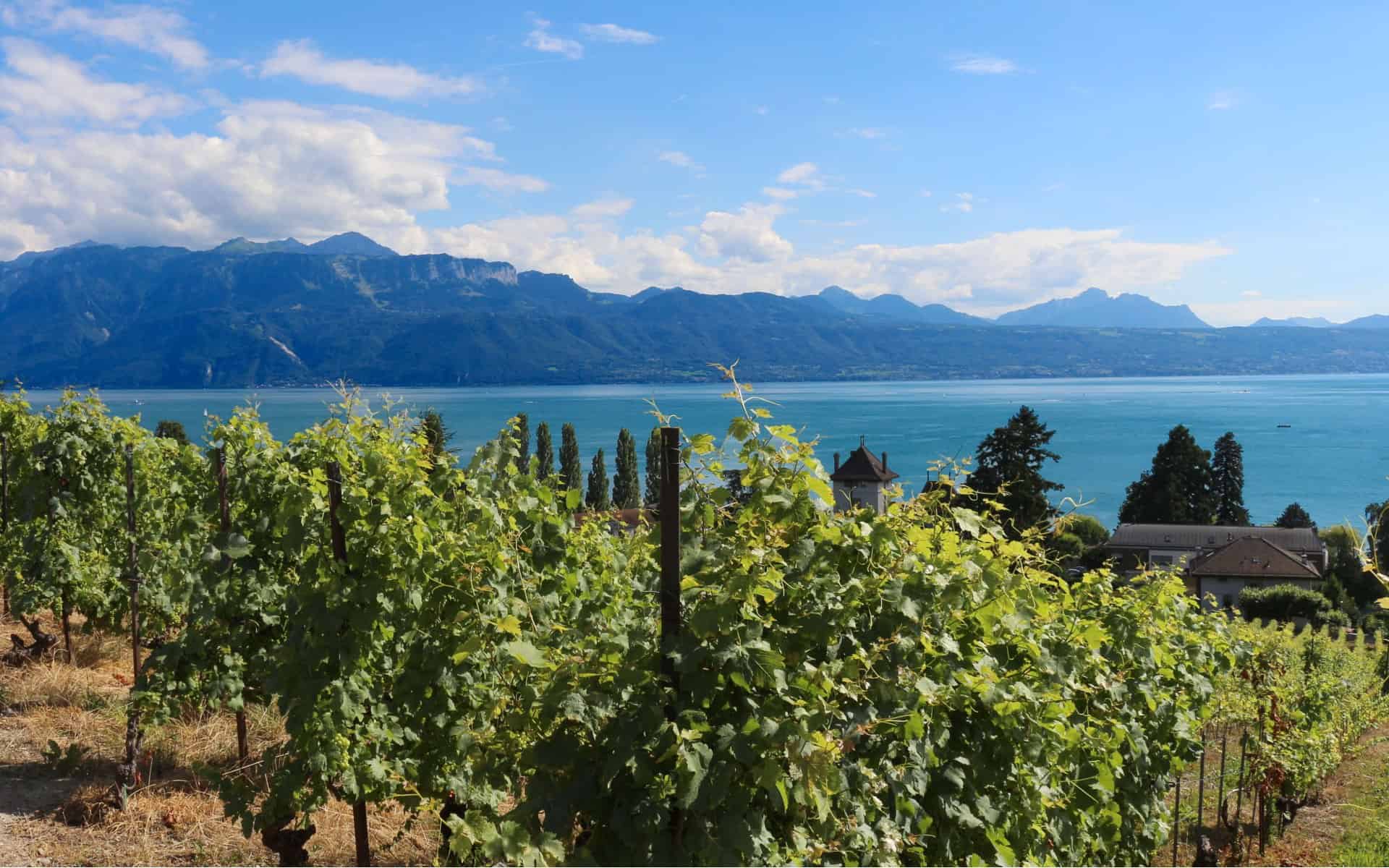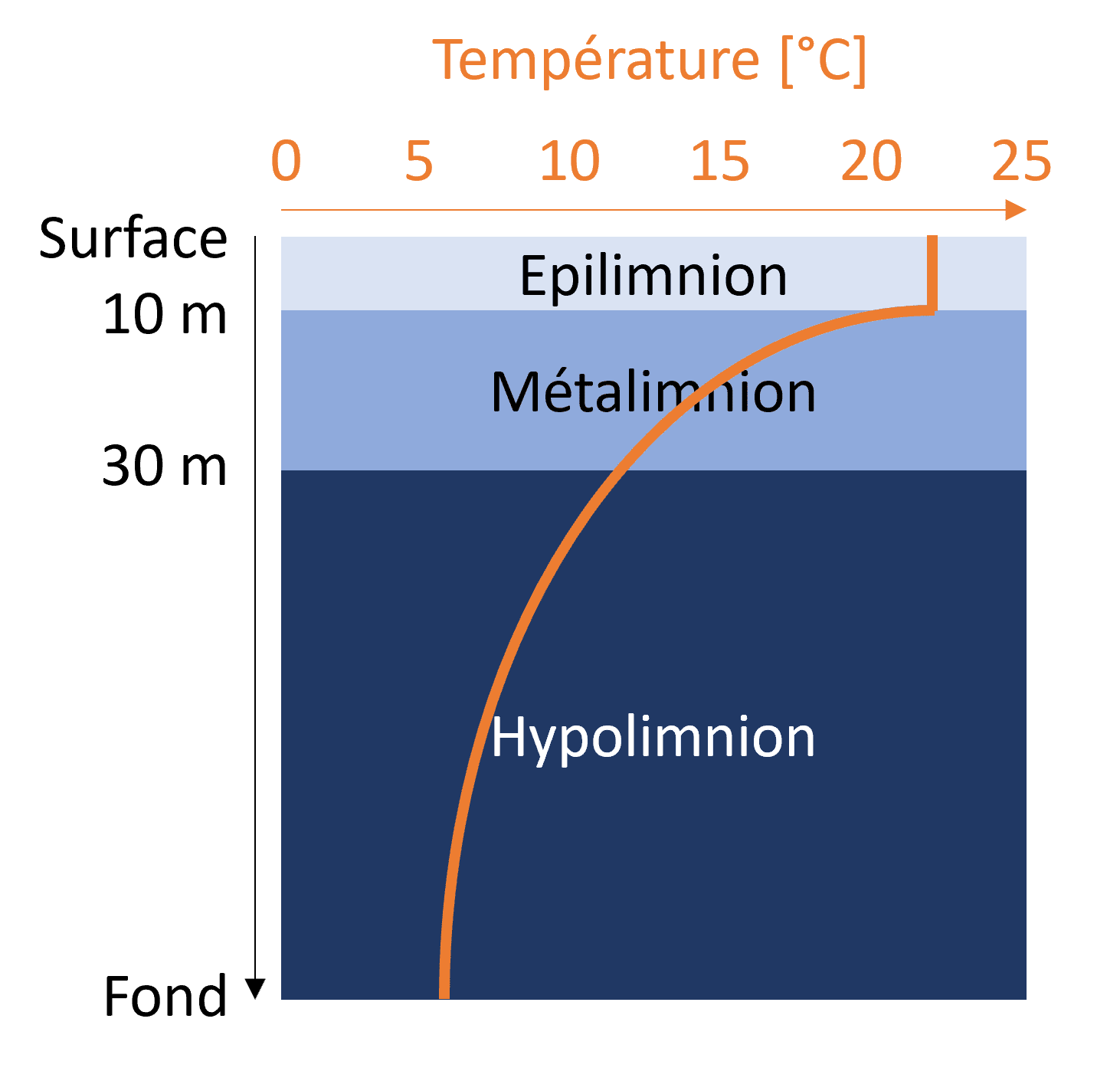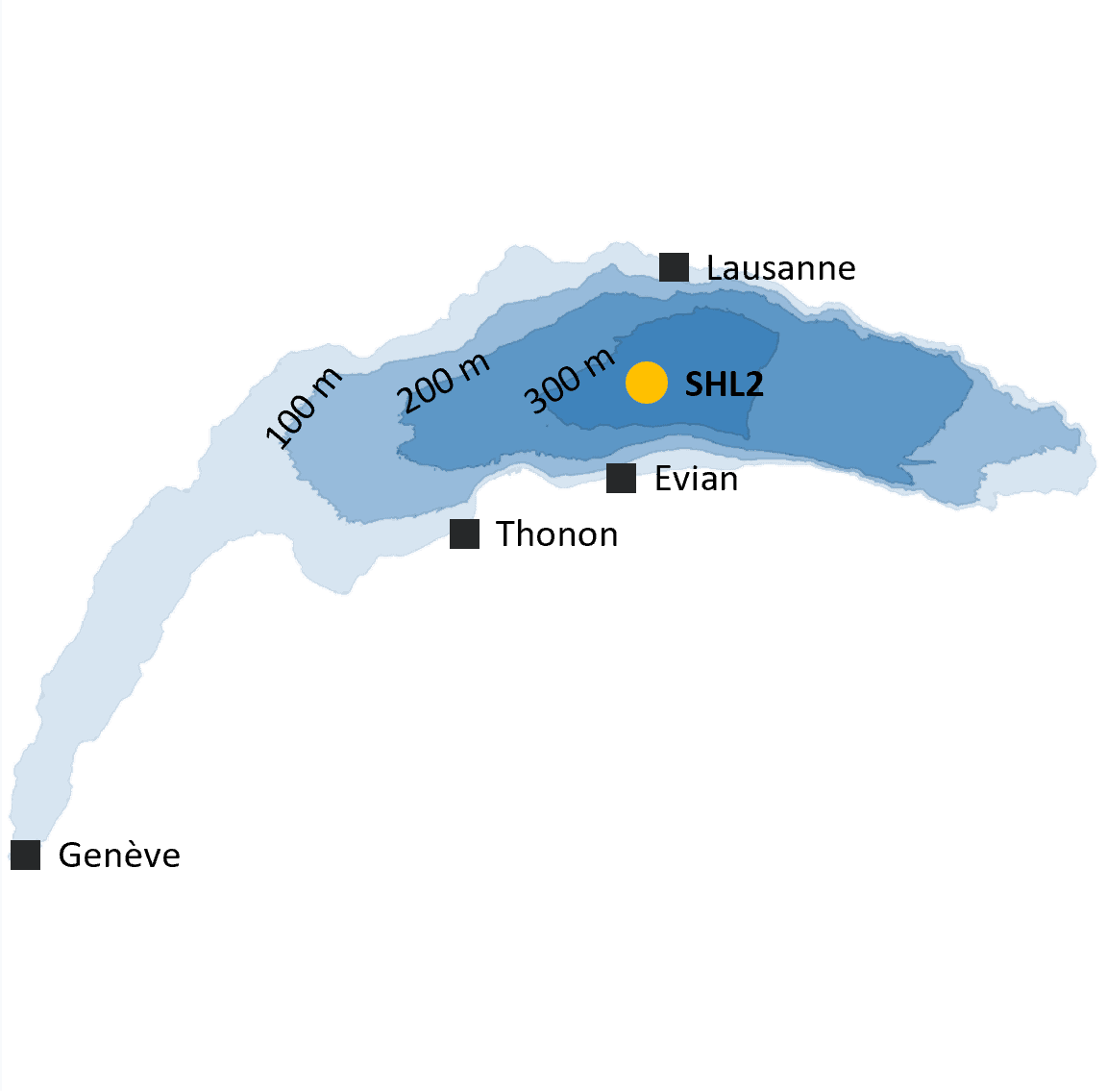Subscribe to CIPEL's quarterly newsletter with the latest lake analysis results and CIPEL news.

THE 4 SEASONS OF LEMAN
To what extent does the lake warm up or cool down over the year? How does its oxygen content change? And how does its transparency and algae growth fluctuate? To better understand how it works, follow the lake's evolution through the seasons.
Lake Geneva in summer
Separation into 3 superimposed water layers and algal growth
In summer, the lake divides into 3 superimposed water layers: epilimnion (warm), metalimnion (warm), hypolimnion (cold).
Algae suspended in the water continue to grow in the epilimnion and metalimnion, where they benefit from sufficient light and nutrients (mainly nitrogen and phosphorus). The more algae there are, the less transparent surface water becomes.
Algae are important to the functioning of the lake, forming the basis of the food chain. Most of them pose no problem, but some species are problematic: those that clog fishing nets, and toxic cyanobacteria.

Lake Geneva water temperature in summer
In summer, the lake divides into 3 superimposed water layers. The epilimnion, located between the surface and a depth of around 10 m, is the layer that is virtually homogeneous in temperature. Below this, the metalimnion is the layer where temperature decreases rapidly with depth. It is located at depths of between 10 m and 30 m. At greater depths, the hypolimnion is the layer of almost temperature-homogeneous cold water between the bottom of the metalimnion and the lake bed. The metalimnion acts as a barrier, preventing the epilimnion and hypolimnion waters from mixing.

The measuring station
Lake Geneva is regularly monitored at SHL2, the measuring station located at the lake's deepest point (309 m).
Measurement campaigns are carried out by the Centre alpin de recherche sur les réseaux trophiques et les écosystèmes limniques (CARRTEL, Université Savoie Mont Blanc, INRAE, Thonon-les-Bains, France). Water temperature is measured continuously between the surface and the bottom of the lake using a probe. The quantities of oxygen and algae suspended in the water (phytoplankton) are measured from water samples taken at various depths between the surface and the lake bottom. Surface water transparency is measured with a Secchi disk.
Data for 2021 and previous years have been validated and can be downloaded from the OLA Lake Observatory website. Data for 2022 and 2023 are provisional.



Newsletter

Limnological bulletin
Discover the latest temperature, Secchi transparency, turbidity and chlorophyll a concentration measurement data and their evolution.








